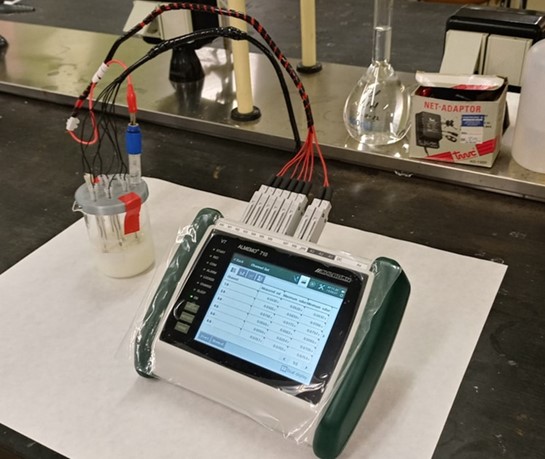Let’s start the analysis of the harvest 2023
The Rueda Wine Station has once again hosted a new meeting of the MINORSENS project. During the event, the Agrarian Technological Institute of Castilla y León provided the University of Valladolid and the Polytechnic Institute of Braganza with grape, must and wine samples from the 2023 harvest of minority varieties to for analysis. Therefore, we are starting the next stage: the physical-chemical characterization of this first batch of the minority varieties grapes, musts and wines produced last year 2023. In addition, we agreed on a homogeneous protocol for the thawing of the samples, having the opportunity to taste a small selection of wines made from the varieties: Puesta en Cruz (from Arribes, white wine produced in 2023), Gajo Arroba (from Arribes, red wine produced in 2023) and Tinto Jeromo (also from Arribes, red wine produced in 2023).

MINORSENS and technology: electronic nose and tongue
One of the innovations of the MINORSENS project lies in the use of electronic analysis methods of musts and wines, something that, so far, has been carried out through conventional physical-chemical and sensory methods. But, what exactly do these tools consist of?
The electronic nose is based on a network of resistive sensors equipped with specific hardware and software that allows for pattern recognition. The objective is to analyse the volatile organic compounds in musts and wines, imitating, in a simplified way, the mammals’ olfactory system. It is part of a research area called biomimicry, meaning applying natural operating patterns to electronic tools created by humans. The objective of this device is to obtain objective measurements that do not depend on human subjectivity. The smell provokes a sensation that our brain automatically interprets, so the analysis of a wine can be somehow biased.
The sensors used by the electronic nose are based on metal oxides. Several of these sensors are needed because each is in charge of analyzing a single odor or component of the sample. During the development of the project, the most suitable sensors will be selected to detect the components present in the headspace of the selected musts and wines. In addition, the functioning of the fibres responsible for absorbing volatile components will be evaluated.

The bioelectronic tongue is also a biomimetic system inspired, in this case, by the sense of taste. It uses a novel network of electrochemical nanosensors and nanobiosensors capable of detecting compounds such as sugars, phenols, polyphenols and organic acids. The polyphenol content of wine is an important parameter in the wine industry. These substances exhibit antioxidant activity, meaning that they help to neutralize free radicals and protect cells from oxidative damage. This means that polyphenols can prevent premature aging and reduce the risk of certain diseases. From a quality perspective, polyphenols contribute to wine’s color, texture, bitterness and astringency, so quantifying them is key to controlling the type of wine we want to make.
Similar to the electronic nose, the bioelectronic tongue uses pattern recognition software that implements supervised and unsupervised chemometric techniques. Thanks to the bioelectronic tongue, we will be able to objectively analyse the quality of musts and wines and establish correlations with chemical parameters. In the future, the bioelectronic tongue could be a portable device used in wineries as another work tool to help ensure the quality and unique characteristics of wines.